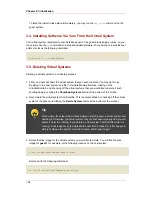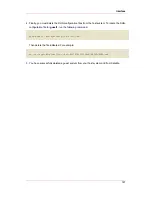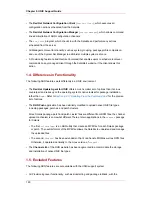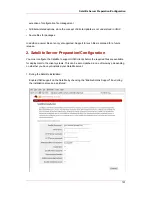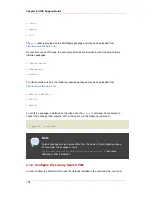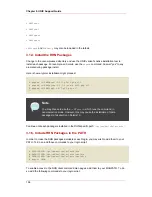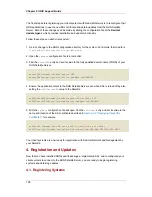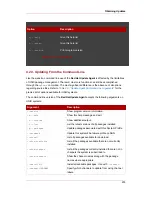
software channels designed to serve UNIX variants can be constructed almost exactly as the
custom channels described in the RHN Channel Management Guide. The most significant
difference is the architecture. When creating a UNIX software channel, ensure you select the
base channel architecture appropriate for the systems to be served.
Furthermore, Red Hat recommends you break down your packages into base and child
channels depending on their nature. For example, on Solaris, installation packages should go in
the Solaris base channel, while patches and Patch Clusters should go in a child channel of the
Solaris base channel. Extra installation packages can go in a separate Extras child channel.
RHN treats patches similarly to packages; they are listed and installed in the same way and with
the same interface as normal packages. Patches are 'numbered' by Solaris, and will have
names like "patch-solaris-108434". The version of a Solaris patch is extracted from the original
Solaris metadata, and the release is always 1.
Patch Clusters are bundles of patches that are installed as a unit. RHN keeps track of the last
time that a Patch Cluster was installed successfully on a system. However, Patch Clusters are
not tracked on the client as installed entities so they do not appear in the installed packages or
patches list. Patch Cluster names look like "patch-cluster-solaris-7_Recommended". The
version is a datestring, such as "20040206", the release is always 1 and the epoch is always 0.
4.2.1. Uploading Packages to the Satellite
RHN does not provide UNIX content; any Solaris packages, patches or Patch Clusters must be
uploaded to the Satellite in a format that it understands from a client system. That package can
then be managed and distributed to other systems. RHN created
solaris2mpm
to translate
Solaris packages, patches, and patch clusters to a format that the Satellite can understand.
4.2.1.1.
solaris2mpm
As mentioned briefly in
Section 1.4, “Differences in Functionality”
,
solaris2mpm
is part of RHN
Push for Solaris. The content that is pushed to a Solaris channel on the Satellite must first be in
.mpm format.
A .mpm file is an archive containing a description of the package data and the package or patch
itself. The solaris2mpm command must be run on the client, never the Satellite.
Note
solaris2mpm requires free space equal to three times the size of any package,
patch, or patch cluster it is converting. Normally, space in
/tmp/
will be used for
this purpose. However, the
--tempdir
option allows you to specify another
directory if necessary.
Multiple files may be specified on the command line of solaris2mpm. Below is a usage example:
Chapter 9. UNIX Support Guide
200
Summary of Contents for NETWORK SATELLITE 5.1.0 - CHANNEL MANAGEMENT
Page 1: ...Red Hat Network Satellite Reference Guide 5 1 0 5 1 ISBN Publication date ...
Page 2: ...Red Hat Network Satellite ...
Page 4: ...Red Hat Network Satellite ...
Page 12: ...xii ...
Page 22: ...8 ...
Page 35: ...Figure 2 11 Available Package Updates Available Package Updates 21 ...
Page 52: ...38 ...
Page 74: ...Figure 5 15 Text Mode Welcome Screen Chapter 5 Red Hat Network Registration Client 60 ...
Page 176: ...162 ...
Page 202: ...188 ...
Page 220: ...206 ...
Page 300: ...Your Preferences 71 Index 286 ...

